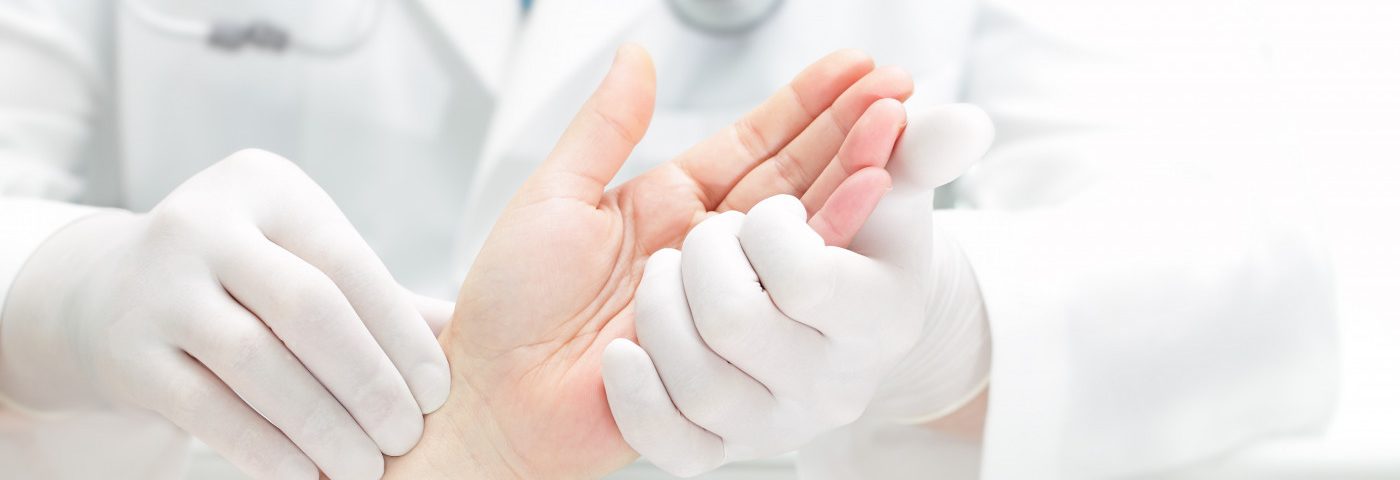Bronchiectasis patients seem to have a higher prevalence of osteopenia (low bone density) and osteoporosis (severely weakened bones) at younger ages than the general population, a single-center study suggests.
The study, “Osteopenia and Osteoporosis in Patients with Bronchiectasis: Association with Respiratory Parameters, Body Composition, Muscle Strength and Bone Remodeling Biomarkers,” was published in the journal Scientific Reports.
People with bronchiectasis have an increased level of inflammation both locally and systemically (in the whole body). High levels of cytokines — molecules produced upon inflammation — have been linked to muscle degradation and lower lean mass in patients with bronchiectasis, cystic fibrosis, and chronic obstructive pulmonary disease (COPD).
Moreover, people with bronchiectasis may have a deficit of vitamin K, responsible for regulating calcium absorption and bone maintenance.
As a result, patients with bronchiectasis may have frail bones, namely osteopenia and osteoporosis. But the prevalence of osteopenia and/or osteoporosis, as well as their risk factors, are currently not well established in bronchiectasis.
To address this, researchers from Malaga, Spain, studied the prevalence of osteopenia and osteoporosis in a population of 123 patients (80 women and 43 men; mean age of 49.6 years) with bronchiectasis. Their aim was to correlate the presence of these conditions with clinical parameters including respiratory, nutritional, and molecular markers.
More than half (64.2%) of the patients had normal bone mineral density (BMD), while 23.6% had osteopenia and 12.2% osteoporosis. Three women had bone fractures due to osteoporosis.
They found that the prevalence of osteoporosis increased progressively with age — from 2.3% in patients younger than 45, to 18.7% in those from 45 to 65 years, to 38.9% in those older than 65.
The team also saw a tendency for more bone fractures in older patients. In the osteoporosis group, individuals with fractures had a mean age of 79.5, and those without fractures had an average age of 61.1 years.
Compared with the general population, where the prevalence of osteoporosis increases in women with menopause (ages 50–59) from roughly 15% to more than 80% in women older than 80, the risk was higher in the patient group analyzed in this study, although it included younger patients (thus with a lower prevalence of post-menopausal osteoporosis) and males.
“The results obtained in our work suggest that there could be a higher prevalence of osteoporosis than expected based only on demographic risk factors,” the researchers wrote.
Researchers then analyzed which factors were correlated with increased bone frailty. Lung infections showed no correlation with the prevalence of bone conditions in these patients. However, they saw a tendency between the presence of the bacteria Staphylococcus aureus and osteoporosis.
Fifty-two patients took calcium supplements and 68 patients vitamin D, but only 20% of them had low levels of vitamin D (less than 20 mcg/dl). No association was found between vitamin D levels and fat-free mass, as well as handgrip dynamometry, a test that measures muscle strength.
Low fat-free mass was mostly found on female patients (68.9%), and was higher in patients with normal BMD than in patients diagnosed with osteopenia or osteoporosis.
Additionally, researchers observed a significant correlation between severe exacerbations in the last year (corresponding to active inflammation periods) and bone mass, as well as lower scores in a pulmonary function test in patients with osteoporosis and osteopenia. Moreover, a marker of bone turnover, called osteocalcin, was higher in patients with osteoporosis than in those with normal BMD or osteopenia.
“Bone turnover markers predict the rate of bone formation and destruction, and in some studies have been linked to the risk of fracture,” the researchers wrote.
Overall, the results suggest that “there could be a higher prevalence of osteoporosis” among bronchiectasis patients compared with the general population, they wrote.
“Respiratory parameters, fat-free mass, muscle strength, and markers of bone turnover were associated with lower bone mineral density,” they added, although they also noted the need for further studies to confirm these findings.

